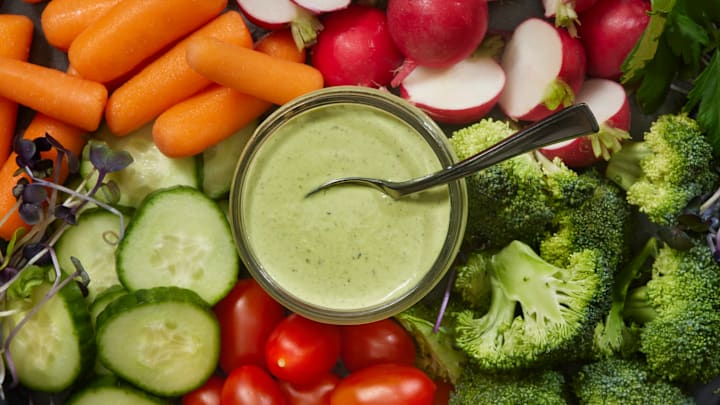Green Goddess dressing is a delicious, herby condiment that you’ve likely seen on a menu before. While its name might seem straightforward (after all, it’s usually a pretty bright green color), its origins are actually quite dramatic.
Where Did Green Goddess Dressing Originate?
Green Goddess dressing was created in 1923 at San Francisco’s Palace Hotel, a historic landmark that has long attracted the most happening people.
Back then, English actor George Arliss was staying at the hotel while performing in a play titled The Green Goddess. As the story goes, the hotel’s head chef, Philip Roemer, crafted a new salad dressing in Arliss’s honor; its name was a tribute to the play, which was popular at the time (though, like many early 20th-century works, the drama hasn’t aged well—it featured Arliss in the problematic role of a fictional maharajah, and subsequent film versions included white actors in brownface).
Despite the play’s outdated legacy, the dressing it inspired took on a life of its own.
What’s Actually in Green Goddess Dressing?
The original recipe featured a creamy mayo and vinegar base, packed with fresh herbs like tarragon, chives, and parsley, plus anchovies or Worcestershire sauce.
Naturally, people have put their own spin on it over the years. Some versions have swapped in ingredients like Greek yogurt, avocado, or basil; others have omitted the Worcestershire sauce and anchovies to make it vegetarian. You can also make it thicker so it has a more dip-like consistency. But no matter what tweaks various people have made, the overall formula stays the same, creating a dressing that’s creamy, punchy, and, of course, very green.
While Green Goddess never quite reached the household-name status of ranch or Caesar, it has built itself quite a steady following. It appeared in cookbooks throughout the 1940s and 1950s and regained popularity in the 1970s. That revival is happening again today, and if you’ve ever tasted it, it’s easy to see why this dressing has such staying power.
Read More About Your Favorite Condiments:
